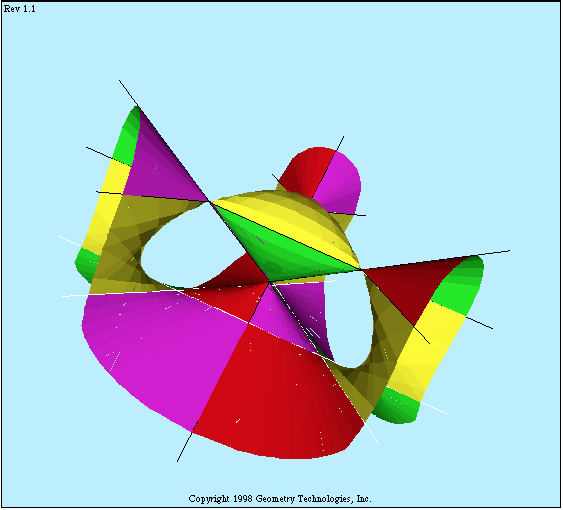The lines on the Cayley surface
This page is dedicated in memory of my friend Sevín Recillas,
who got me interested in this surface.
|
Scroll down to the discussion of the main features of the Cayley surface. |

|
Viewing suggestion:
If your browser is java-enabled, I recommend that you visit one of the JGV links to view the interactive figure. You can view that figure from different directions by dragging it with the mouse. |
Static views:
|
Introduction: There are 9 lines on the Cayley surface. All of these lines are shown in this figure. Six of them join pairs of nodes. Thus, we can view the nodes as vertices of a tetrahedron, and these six lines are the edges of the tetrahedron. The other three lines lie in the trigangent plane, which is discussed on the duality page. The Cayley surface is the dual variety of the Steiner surface. This means that the points of the Cayley surface correspond bijectively to the tangent planes of the Steiner surface (except that the correspondence is not bijective along finitely many subvarieties). For a discussion of specific features of the duality correspondence, please click on the Duality link at the left. |